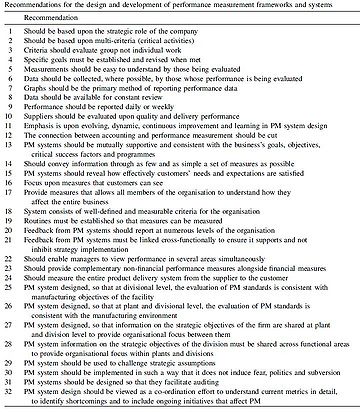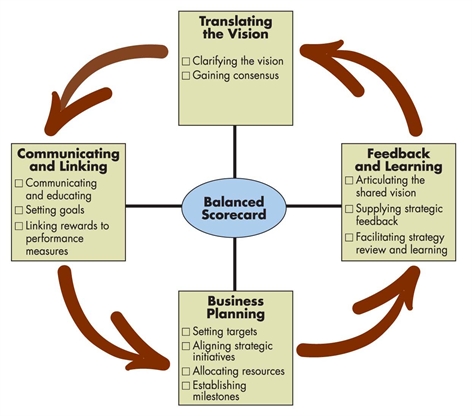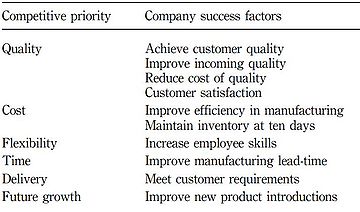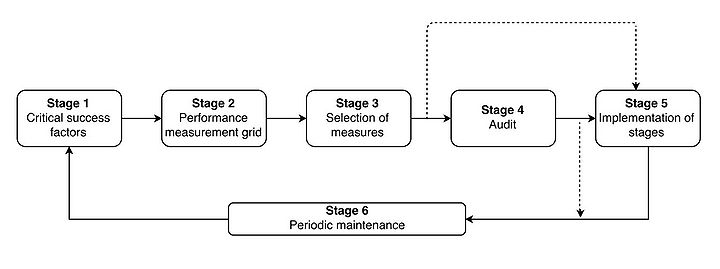Performance Measurement and Performance Management
Mathematical physicist and engineer Lord Kelvin introduced the notion of “an absolute zero” corresponding to the absolute absence of thermal agitation. His work has not only impacted the field of thermodynamics but also influenced investigation and, to this day, he is still considered a reference.
“If you can not measure it, you can not improve it”. This quote by Lord Kelvin highlights the importance of measurement. Measurement in management is essential for continuous improvement. Despite the importance of measurement, taking measurements in project management is not as frequent as it should be. A project can be interpreted from different angles, which leads to the importance of the project manager. It comes to the project manager to set goals, make decisions, stablish the key indicators and parameters to control and monitor the progress of a particular project. Performance measurements must be defined to monitor and, therefore, manage projects to thrive in an organizational context.
This article intends to serve as a guide for future project management practitioners. This guide is limited as the number of methods in performance measurement and performance management is extensive.
Big Idea of Performance Measurement and Management
Performance is defined as the execution of an action [1]. Every action has an impact and the embedded curiosity of humans impels us to analyze, qualitatively or quantitatively, the magnitude of that impact. In a Project management context, analysis entails a successful or unsuccessful management of projects.
In order to analyze, measurements must be made in advance. The definition of goals is the most arduous stage of the measurement process. Sink stated that measurement is a mystery, admitting that is complex, frustrating, difficult, challenging, important, abused and misused [2].
Performance measurement systems are developed in order to monitor and maintain organizational control. This process ensures that an organization pursues strategies that lead to the achievement of overall goals and objectives [3]. The performance measurement is the quantification of the results achieved in relation to the desired goal. The overall performance of an organization is based on social, financial, economic and environment performance and affects the organization’s reputation, meet of expectations and ability to attract and withholding of stakeholders. Although small businesses may be able to operate without setting and measuring goals despite the benefits of this tools, medium-sized businesses and large organizations find this control of processes critical.
Therefore, performance measurement is a powerful tool to achieve a more effective management. Nevertheless, measurements in performance only provides indications about an effect, about what happened. The outcome of these measurements do not provide information about the cause of that result nor what to do about it [4]. Thus, performance management uses performance measurement to refine organizational activities.
Application
Performance measurement offers a framework of results that will be managed and evaluated to improve the operations of an organization in order to align its objective. Therefore, performance measurement forms the basis of organizational management and triggers the possibility to assess the progress towards the organization's defined objectives.
According to Bititcti et al, performance measurement needs to include the following characteristics [5]:
- being sensitive to changes that can occur in an organization's external and internal environment;
- when the changes in the external and internal environment are significant enough, review and reprioritize internal objectives;
- deploying the changes to internal objectives and priorities to critical parts of the organization, thus ensuring alignment at all times;
- ensuring that gains achieved through improvement programmes are maintained.
A way to measure objectives of projects and project management are the Key Performance Indicators (KPI). The setting of KPIs need to be comprehensive and balanced as will define the procedure of measurement and its subsequent analysis. Consequently, the SMART goal setting technique is recommended due to its specificity, measurability, achievability relevancy and time feasibility facilitating the ability to learn from the performance indicators and use them in the performance management analysis. Paul Folan and Jim Browne grouped together different recommendations on designing of performance measurement frameworks and systems proposed by various researches in the field such as [6]:
- performance measurements should be based upon the strategic role of the company;
- measurements should be easy to understand by those being evaluated;
- emphasis is upon evolving, dynamic, continuous improvement and learning of performance measurements system design;
- performance measurement should convey information through as few and as simple a set of measures as possible
- performance measurement should provide complementary non-financial performance measures alongside financial measures;
- performance measurement should measure the entire product delivery system from the supplier to the customer.
When assessing the results of the measurements, three performance measurements systems are the most representative: the Balanced Scorecard system, the Business Process Reengineering system and the Medori and Steeple's system Cite error: Closing </ref> missing for <ref> tag:
- The Financial perspective concentrates on helping managers track financial success in terms of measurable variables such as operating costs, return on investment, generation of cash flow or shareholder value.
- The Customer perspective fixates on helping managers to consider customer objectives and how is the appearance to customers. This perspective can be measured in terms of indexes of customer satisfaction, customer acquisition, market share or on-time delivery.
- The Internal Business Process perspective focuses attention on helping managers concentrating on operational goals and on the key processes in need to deliver customer objectives and satisfy shareholders. This perspective can be measured in terms of quality of processes, cycle time of processes or inventory control.
- The Learning and Growth perspective establishes attention on the intangible assets of future success such as employee skills, leadership, technology training, information availability or organizational culture.
Kaplan and Norton provide as well an additional framework: the procedural framework. This framework links long-term strategy with short-terms actions introducing four new management stages or processes which relation is displayed in Figure 5 Cite error: Closing </ref> missing for <ref> tag:
- First stage: Critical success factors
Definition of company’s manufacturing strategy. The performance measures have to be related to the strategy to determine its achievement. The strategic requirements are identified including the customer requirements. - Second stage: Performance measurement grid
In this stage, strategic requirements are matched with the established competitive priorities. A table is here suggested to display the matches between strategic requirements and competitive priorities. In case there is no match, the section of the table should be left in blank. This representation allows project managers to the areas to consider performance measurement in terms of competitive priorities. As shown in the example in Figure 5, reducing lead time could match with the time competitive priority. - Third stage: Selection of measures
Performance measures are selected from a pre-defined list of 105 measures. The Performance measurement grid provides a good guidance to identify and chose the most appropriate performance measures for a project. - Fourth stage: Audit
If there are no existing performance measurement systems, this stage is omitted and stage 5 becomes the next stage to proceed with. Otherwise, audit existing performance measurement systems in comparison with the new performance measures selected and identified in the previous stage:- If the existing performance measures are congruent with the new measures identified, the existing measures are kept and continuously used;
- If the existing performance measures are divergent with the new selected measures, the existing measures are considered no longer relevant and should be dismissed;
- If the new selected measures are divergent with the existing measures, the new measures become critical measures. These critical measures are important to the company’s or project’s success but are not currently being measured. The implementation of these critical measures provides an opportunity to improve the current measurement system.
- Fifth stage: Implementation of measures
New measures defined in the third stage and measures identified as critical in the fourth stage need to be implemented. An eight-step plan is provided to guide the implementation of the new measures. First, the measures need to be titled from the pre-defined list of stage 3. Second, the purpose of the measure has to be identified. Third, a benchmark has to be determined in order to compare the measure against a meaningful reference value (this measure can be referenced internally or externally). Fourth, an equation must be stablished to calculate the measure. Fifth, setting the frequency in which the performance measure should be recorded and reported. Sixth, the origin of the data must be specified (internal or external measurements). Seventh, responsibility on collecting and reporting data has to be assigned to an individual or a unit. Last, identify next practical step considering the performance result. - Sixth stage: Periodic maintenance
The last stage of the system implies continuously reviewing the existing performance measurement system in order for it to not become obsolete and remain of relevance to measure and manage performance in a project or a company.
Figure 6 shows a flowchart illustrating the Medori and Steeple’s framework structure. An important characteristic of this framework relies on the performance management aspect of this study as it allows project managers practitioners to enhance an existing performance measurement system or create a completely new system.
Folan and Browne combined in a table the different features of each of these performance measurement systems as illustrated in figure 7. This table provides project managers an approach to consider which system would be more suitable to use considering their current dimension of measurement.
As stated in the Project Management Body of Knowledge guide, the performance measurement baselines represent a management control that will generally change intermittently in response to an approved scope change [7]. The application of performance management is present at the individual, the operational and the strategic levels, involving processes, metrics, tools and systems to manage the performance. Therefore, performance management is an approach to allocating and improving resources in order to increase efficiency in the project development. The complete understanding of processes and employees regarding the project strategy and their contribution leads to the correct implementation of the project. Thus, project managers play an important role in the iterative process of performance management including the planning and the execution part of the project. Gathering data from employees and processes about the state of operational performance measures provides project managers the necessary information to apply corrective actions to maintain the project’s efficiency [8].
Limitations
Nevertheless, performance measurement and performance management can present limitations starting by the definition and association of the performance indicators. If the measures performed are irrelevant, no corrective actions can be applied to the current performance measurement system more than excluding the performance indicator or designing the correct equation or procedure to measure the indicator.
The systems hereby introduced present some limitations as well. Project managers need to understand that there is a lower degree of flexibility using these systems as they consider pre-defined lists of measures. Relating the strategy to the critical success factors can present as well difficulties to link. Also, the performance measures from the lists can become dated and dismiss important emerging competitive priorities within projects. Separately, the BPR – AMBITE system is designed for a BPR process and is not directly adaptable to other processes and the Medori and Steeple’s system constructs the performance grid from six competitive priorities [6]Cite error:
<ref> tags exist, but no <references/> tag was found




